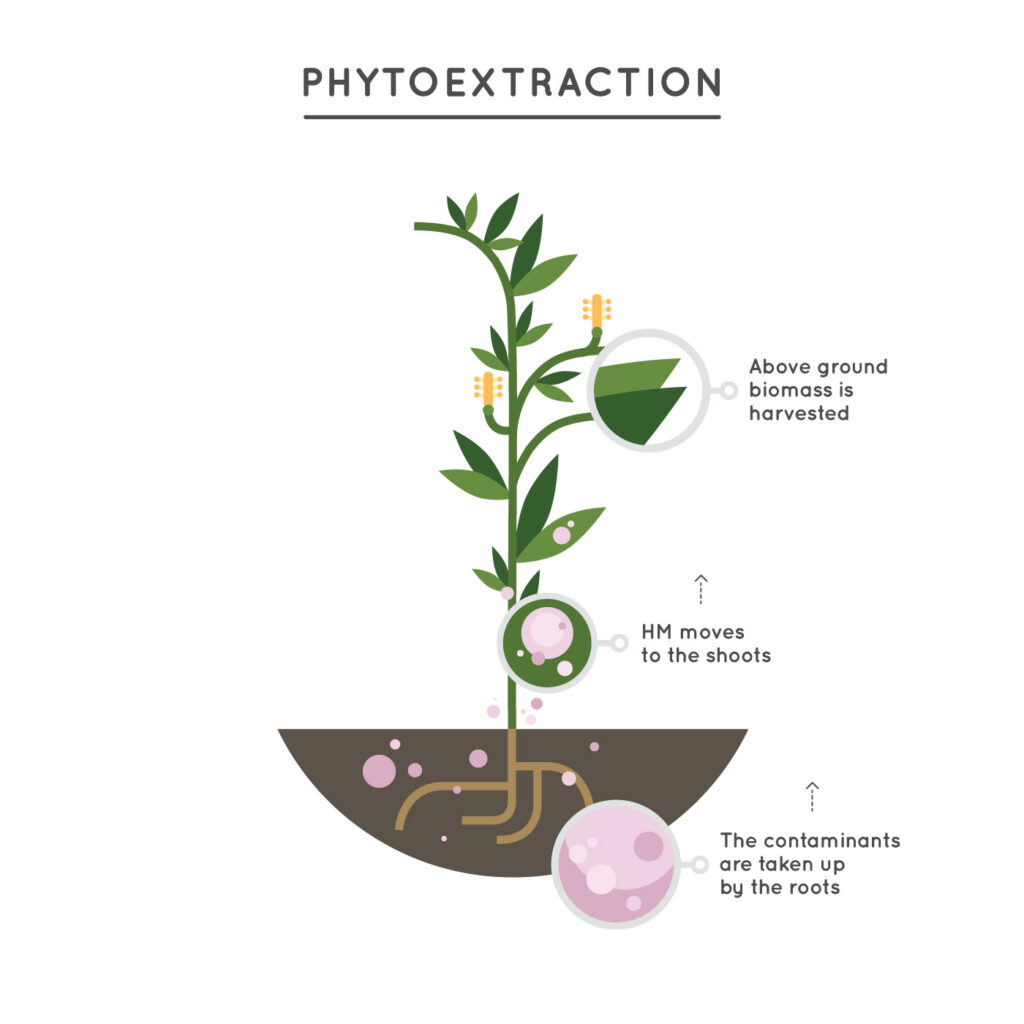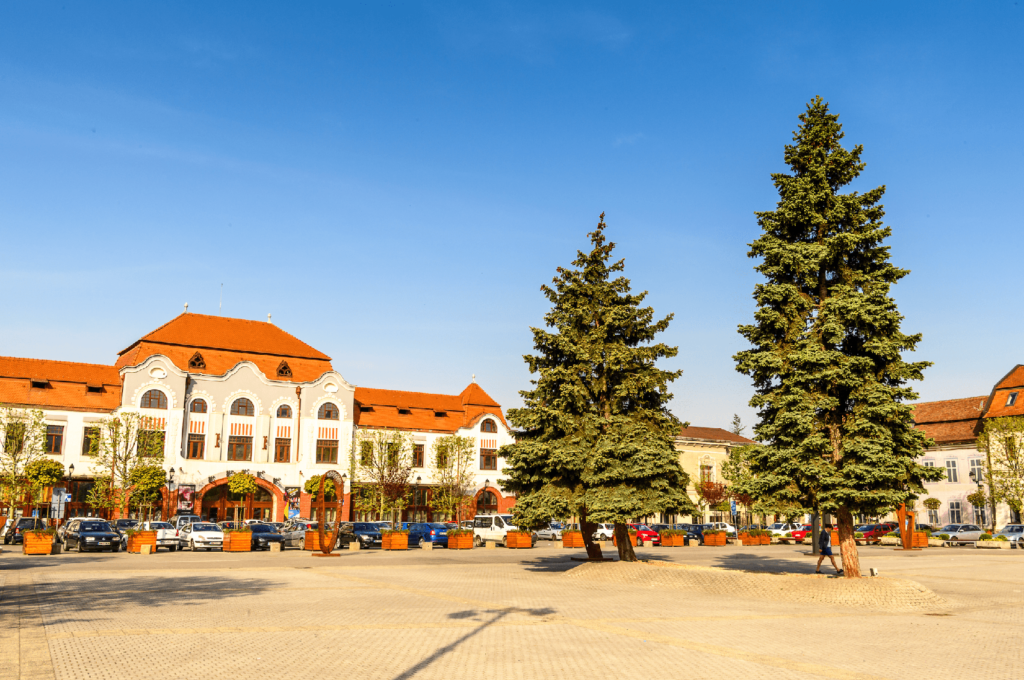Pollution is one of the most significant environmental challenges worldwide; according to the European Environmental Agency, the management of polluted land costs about 6.5 billion€ a year in Europe alone.
Contamination with heavy metals, in particular (HM), represents a real health concern. Accordingly, urban ecosystems face severe problems that affect the health and quality of life of the population.
Baia Mare City is the capital of the Maramures county from the north-western part of Romania. The city is located in the valley formed along the Sasar River, which lies between the Somes Plateau and the Eastern Carpathian Mountains. The volcanic rocks in the nearby mountain massifs contain gold-silver ores and non-ferrous metals such as lead, zinc, copper, etc. Historically, this was a metallurgical area, but the city is currently transitioning from its past as Romania’s mining capital towards a new sustainable social, economic, and environmental development model. However, although the city and its citizens are ready to move on into a new socio-economic era, the metallurgical legacy persists in the form of heavy metal pollution of the environment that significantly affects local ecosystems and human health in the urban area. Thus, currently about 627 hectares of contaminated land (5 times over the acceptable limits) are awaiting a solution.
In this context, SPIRE (Smart Post-Industrial Regenerative Ecosystem Project) proposes sustainable land use and integrated nature-based solutions aimed at inspiring action and re-claiming several polluted sites. The project integrates Nature-Based Solutions (NBS) and phytoremediation strategies into urban design and city planning, potentially providing a model for other European cities that still bear the burden of their industrial past.
Public health consequences from pollution
The public health consequences of pollution are severe. Compared to the average life expectancy in the Romanian population, in Baia Mare, the life expectancy 2.2 years less; also, the overall mortality index is 10-15% higher; D2 deficiency is 65-95% higher, and the frequency of metabolic diseases caused by lead pollution is 40-60% higher.
Past extractions at the Sasar mine have caused pollution of the environment: surface and underground water, air and soil pollution.
• The water pollution is due to chemical substances and solid suspension particles; furthermore, rain and groundwater, contaminated after contact with the abandoned mines, runs off into the river without pre-treatment, causing permanent damage to Sasar river and its tributaries.
• The air pollution is caused by the gases coming from oxidizing and burning of the minerals from the tailing ponds; this contamination is extremely harmful to human health, crops, and vegetation.
• The soil pollution is due to the accumulation of many heavy metals (HM) in the ground, which leads to the inhibition of bacteria activity and a decrease of nutrient mobility in the soil, affecting flora and fauna in the area.
Exposure to high levels of air pollution can cause a variety of adverse health effects, amongst them an increase in the risk of respiratory infections, heart disease, stroke, and lung cancer. Short and long-term exposure to air pollutants is associated with poor health outcomes. More severe consequences affect people who are already ill; children, the elderly, and the poor are more susceptible. The most harmful pollutants – closely associated with excessive premature mortality – are fine PM2.5 particles that penetrate deep into the lungs’ passageways. Although air quality in Baia Mare area has generally improved over the last years, the adverse health effects of particulate air pollution, even at relatively low levels, remain a public health concern.
Thanks to a field visit in Baia Mare in November 2019, the SPIRE project team launched several semi-structured or open interviews with local citizens. We can see in Figure 2 how citizens perceive the threats to personal health posed by soil and water contamination. However, concerning the fear of contracting a pollution-related illness, around 20,5% of respondents agree or strongly agree, while circa 43% strongly disagree or disagree.
Environmental pollution studies on the risk groups for lead, cadmium, and arsenic pollution have shown concentrations of pollutants in the human body that exceed the reference levels. The lead indicator – lead in the blood is the main parameter to indicate the concentration of lead in the human body – explains the increased incidence rates of specific morbidity in respiratory, digestive, renal, endocrine, and metabolic disease.
Heavy Metals (HM) soil contamination
Humans have used heavy metals for thousands of years. The mercury compound cinnabar (HgS) was used in prehistoric cave paintings for its red colours. Metallic mercury (as well as white lead) was known in ancient Greece, where it was used for lightening the skin. Since ancient times lead (Pb) was used for pottery glazing while mercury (Hg) was attributed medicinal properties. Ancient Romans used lead acetate as wine sweetener. In past centuries, hatmakers commonly cured felt using mercurous nitrate through inhalation of mercury vapours; over time, they developed specific symptoms that gave rise to the nickname “mad hatter.”
Awareness of the danger heavy metals pose for the environment, and human health has been gradual. Various public health measures have been undertaken to control, prevent and treat metal toxicity occurring at various levels, such as occupational exposure, accidents, and environmental factors. Metal toxicity depends upon the absorbed dose, the route of exposure, and the duration of exposure.
Among heavy metals, some play a metabolic role in living organisms (microorganisms, plants, humans) but only in minimal doses. Cu, Zn, Co, Ni, and Fe are essential for the survival and growth of microbes. However, these metals can exhibit toxicity at higher concentrations and can render specific proteins inactive. Cu, Se, and Zn are also reported to play important and beneficial roles in human metabolism in small doses. Some metals such as Pb, Hg, and Cd do not play a biological function in living organisms. These toxic metals accumulate within cells and may negatively affect enzyme selectivity, deactivate cellular processes, and damage the DNA structure that may result in cell death. In general, the toxicity effects of heavy metals for living systems are dose-dependent.
The toxicity of heavy metals in humans can disrupt or damage the mental and central nervous system, harm lungs, kidneys, liver, and other vital organs. Long-term exposure of human populations to HM has also shown physical, muscular, and neurological impairments.
Heavy metal contamination poses an environmental concern because it can persist in urban soils for decades. Heavy metal pollution of soil leads to accumulation in plant tissues and eventual phytotoxicity symptoms. In Baia Mare, air circulation has a specific pattern determined by the influence of this region’s orography and the atmospheric calm present here. These conditions favoured the high concentrations of heavy metals in the former industrial areas of Romplumb and Cuprom. After closing these two sources of atmospheric pollution, the air became less polluted, but the soil remained highly contaminated.
Nature-based Solutions and Phytoremediation
There is now an increasing need for innovative, sustainable, affordable, and integrated solutions to soil pollution in Europe. One Nature-Based Solutions (NSB) to the contamination with heavy metals is phytoremediation. Phytoremediation techniques can provide an effective way to restore large areas confronted with soil and water polluted by human activities, constituting a cost-effective and ecological alternative to physical remediation methods, less environmentally friendly and financial efficient.
Phytoremediation is a green technology that relies on plants to mitigate pollutants from the environment. This method is cheap compared to traditional ones and enjoys broad public acceptance. Phytoremediation technology is classified into the following categories: phytoextraction, rhizofiltration, phytostabilization, phytovolatilization, phytodegradation. Not all plants are suitable for phytoremediation. Also, not all are equally efficient. Thus, plant selection has to be carefully made.

Image: Phytoextraction method © Amaia Celaya Alvarez.
Through phytoextraction, heavy metals are translocated and taken up by certain plant species and stored in various plant organs (both above ground and underground). Repeated disposal of biomass can speed up the decontamination process. The harvested biomass can have different concentrations of heavy metals, depending on the level of contamination. Market opportunities for the safe valorisation of biomass contribute to extending this technology on a larger scale. To achieve this, the selection of plant species has to be considered, besides the heavy metal extraction and accumulation capacity, the potential economic value (energy crops, pulp-paper crops, timber trees, or ornamentals). Biomass is used to obtain safe essential oils, energy (thermal, electric), biofuels, biochar, and organic acids with various uses.
SPIRE attempts to develop, deploy, and test innovative and ground-breaking Nature-Based Phytoremediation Solutions across some key strategic pilot sites. The main challenges currently open are:
• testing phytoremediation technics to remove HM from the soil and generate non-toxic new biomaterials and biofuels.
• examining how phytostabilization technics are improving air quality
• assessing species plantation to be applied in different sites.
• evaluating species diversity (types and percentage) after remediation.
Over the next few years, the implementation and testing on the ground of all the proposed techniques and measures will demonstrate the validity and replicability of SPIRE’s innovative approach.
Article originally published in UIA









